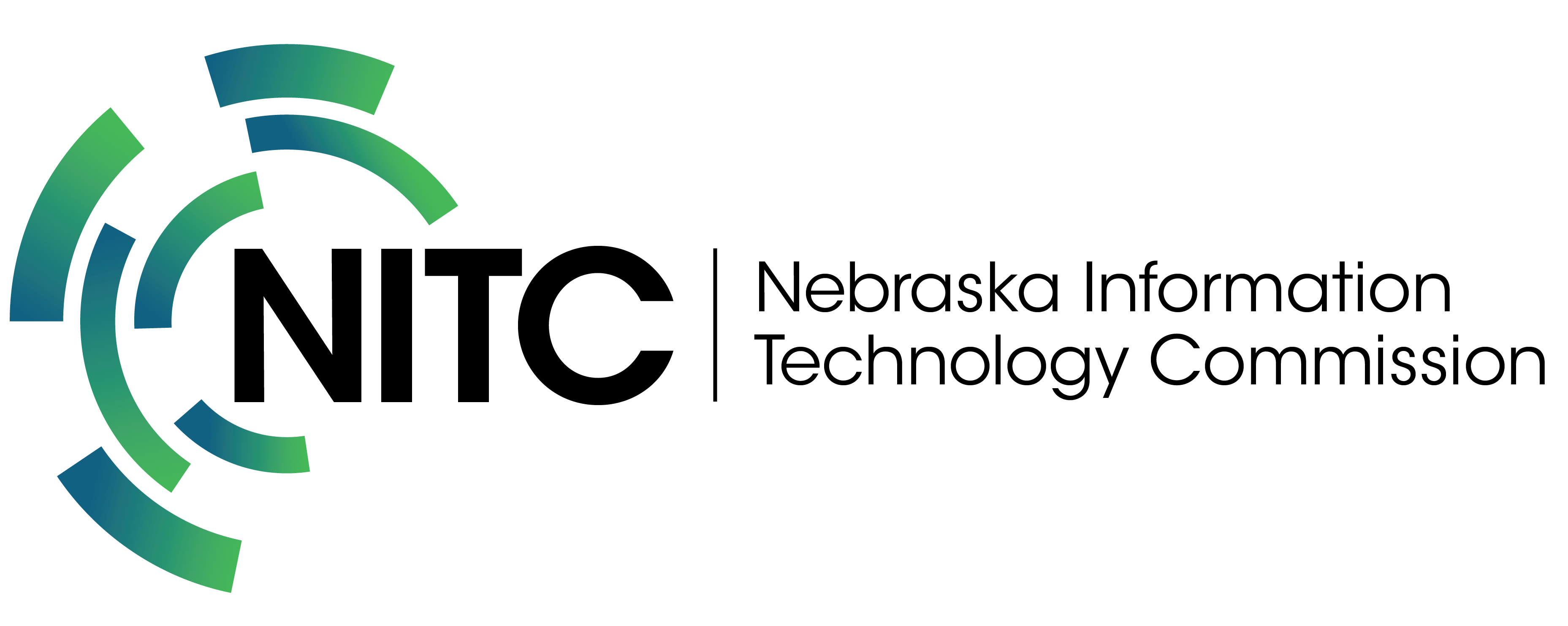Broadband and Homework: How Do We Address the Homework Gap?
By Tom Rolfes and Anne Byers, Nebraska Information Technology Commission
K-12 education and postsecondary education resources are becoming increasingly digital and web-based. Learning management systems, student information systems, and content management systems all require students, parents, teachers, and administrators to have convenient access to the Internet at ample speeds to download, upload, view, and interact with content, learning activities, grades, formative assessments, and records. Never before in the history of the Internet has it been more necessary for all students to have 24/7 access using an Internet-connected computer or tablet with viewable screen and keyboard.
Students who have difficulty completing homework because they do not have reliable home Internet face what has been termed a “homework gap.”
Just how many students in Nebraska fall into the homework gap? A 2014 survey of Nebraskans found that 95% of persons with children in their household have broadband service. With over 350,000 K-12 students enrolled in Nebraska schools, the homework gap may affect over 17,500 students.
There are a number of strategies and technologies that can be used to address the homework divide:
Entry Level Internet Service. Most Internet Service Providers offer an option for an entry level subscription Internet service known by such terms as Basic, Standard or DSL Lite. With lower bandwidth and a lower monthly cost, it may provide a suitable alternative for households where only one or two computers or smartphones are connected at one time. However, like the higher bandwidth plans, providers will prefer (usually not require) that the customer sign a contract for at least 12-24 months, and also provide access to a checking, savings, or credit card account for automatic withdrawal every month. These last two items (i.e. lengthy contracts and automatic withdrawal) often inhibit participation from mobile families. Charter Communications recently launched a low-cost broadband service for qualified seniors and families for $14.99 per month. Spectrum Internet Assist provides 30 Mbps down by 4 Mbps up and does not require a contract. In-home Wi-Fi through Charter can be added for an additional $5 per month.
Support for broadband service for low-income individuals may also available from the federal universal service fund. On April 27, 2016, the FCC released an order allowing qualifying low-income consumers to apply $9.25 per month support to stand-alone mobile or fixed broadband service as well as bundled voice and data service.
The Nebraska Public Service Commission is also taking steps to expand the state universal service lifeline program to include broadband by initiating a broadband adoption pilot program and funding projects in 2015 and 2016.
One of the projects funded in 2016 provides an example of a school district working with a telecommunications provider to address the homework divide. With funding from a Broadband Adoption Grant from the Nebraska Public Service Commission, Allo and Lincoln Public Schools (LPS) are assisting low-income, high-need families with obtaining affordable access to broadband services in their homes, which will further allow LPS students to increase their educational and employment opportunities. The proposed project will initially to target children currently attending LPS whose family income qualifies them for the Federal Free Lunch Program and who will have received or will receive digital hardware from LPS (“Qualified Subscriber”) as part of LPS’s current initiative to provide digital technology to all children attending LPS in the coming years. Qualified Subscribers will be able to access the new Allo service on a month-to-month basis without a contract, on a prepaid basis. Allo is targeting the new service to cost between $10 to $15 per month with a 20x20 Mbps speed. The Commission approved funding up to $150,000 for the implementation of the proposed project.
Public Wi-Fi Centers. One interim strategy to achieving more accessible Internet for economically challenged students is to open up free Internet access points at public or private locations such as school buildings, library buildings, municipal recreation centers, churches, cultural centers, restaurants and coffee shops.
Omaha Public Schools and Cox are taking an innovative approach to addressing the homework divide. Cox, in partnership with Omaha Public Schools (OPS), will bring broadband service to low-income students and families in Omaha by modifying a bus to create a Wi-Fi enabled vehicle offering free broadband connectivity and devices to neighborhoods in north Omaha. Cox plans to target students in the Wakonda and Kennedy Elementary School districts in the Omaha Public Schools system. The Wakonda and Kennedy students reside in some of the lowest-income neighborhoods in Nebraska and thus access to broadband in students' homes is more unlikely. OPS will provide learning opportunities for students on the bus and wilI schedule after school activities using Common Sense Media for students and their parents. The project is being funded with up to $114,218 in support from the Nebraska Public Service Commission’s Broadband Adoption program.
Check-out of Portable Wi-Fi Hotspots. Growing in popularity is a cellular-based appliance or antenna known as a hotspot that can be borrowed or purchased and permits one or more laptops or tablets to connect to the Internet using a cellular service or data plan. Increasingly, schools and libraries have begun pilot programs making these devices available for check out via their student library credentials. Most cellular smartphones can double as Wi-Fi hotspots. The Norfolk Public Library and Southeast High School in Lincoln have Wi-Fi hotspot lending programs.
Educational Broadband Service (EBS). EBS, formerly known as the Instructional Television Fixed Service (ITFS), is an educational service that has generally been used for the transmission of instructional material to accredited educational institutions and non-educational institutions such as hospitals, nursing homes, training centers, and rehabilitation centers using high-powered systems. The FCC’s recent revamping of the EBS spectrum will now make it possible for EBS licensees to continue their instructional services utilizing low-power broadband systems while also providing students with high-speed internet access with a radius of up to 35 miles. Nebraska educational entities had 32 active EBS licenses at the time of this writing. (FCC 47 C.F.R., Part 27)
TV White Space (TVWS) Internet. The use of TV White Space channels, portions of licensed UHF radio spectrum that licensees do not use, provides an opportunity to deliver ubiquitous broadband services. UHF radio frequencies are non-line-of sight (NLOS) and are able to penetrate trees and buildings. By positioning a base station and tower connected to a source of Internet, multiple channels are able to transmit Internet access omni-directionally with a radius of up to 10 miles. Each customer premise interacting with the base station must also have a UHF antenna, customer converter, and Wi-Fi router.
The Manhattan Public Library in Manhattan, KS has successfully installed White Space technology in two parks and a community center through the Gigabit Libraries Network TV White Space pilot project. Patrons can access the free WiFi at these locations using their library card number and password.
For more information, contact Tom Rolfes, Education IT Manager, Nebraska Information Technology Commission, tom.rolfes@nebraska.gov, 402-471-7969.
From the January 2017 issue of Nebraska Broadband

